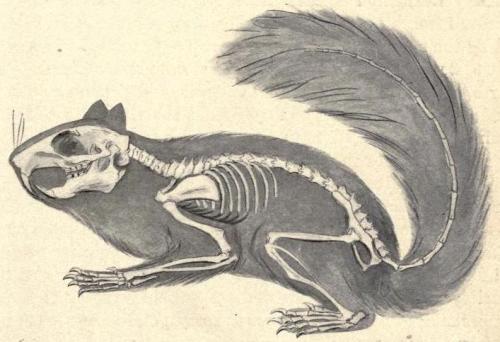----
biomedicalephemera: Skeleton of the squirrel, showing its...
// Art and Reference point

Skeleton of the squirrel, showing its relation to the body
Check out that skull and those teeth - the family Sciuridae is more closely related to beavers, dormice, and porcupines, than they are to your average household rodent, despite looking like "fancy-dress rats".
The skull is often a key differentiating factor for comparative zoologists. The design of the inner ear and teeth/jaws can often point to a very different (and much more accurate) classification of a species than body type.Animal Forms: A Textbook of Zoology. David S. Jordan and Harold Heath, 1902.
----
Shared via my feedly reader
Sent from my iPad
No comments:
Post a Comment